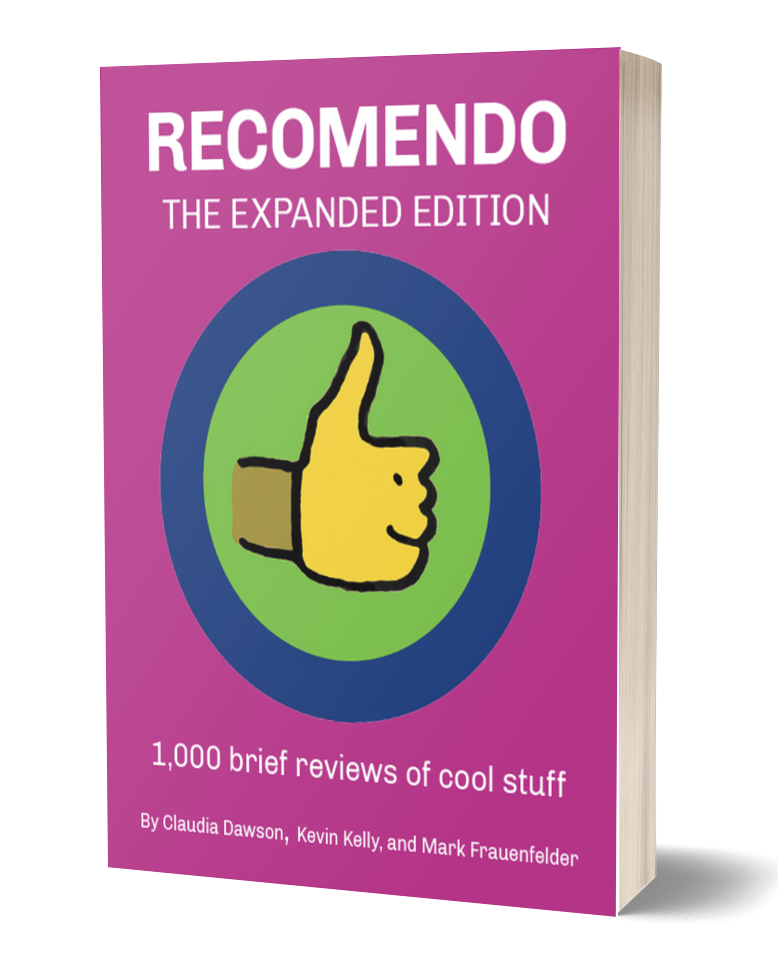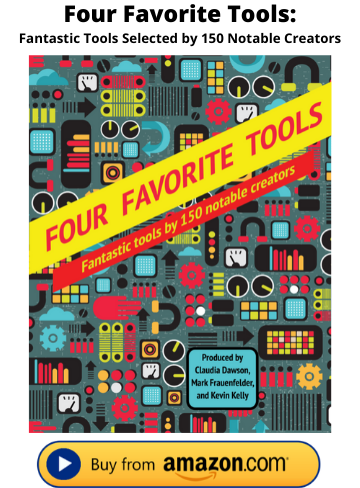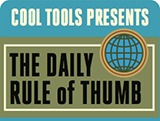A cool tool can be any book, gadget, software, video, map, hardware, material, or website that is tried and true. All reviews on this site are written by readers who have actually used the tool and others like it. Items can be either old or new as long as they are wonderful. We post things we like and ignore the rest. Suggestions for tools much better than what is recommended here are always wanted.
Tell us what you love.Categories
- Announcements
- Aural
- Autonomous Motion
- Backpacking
- Big Systems
- Clothing
- Communications
- Community
- Computers
- Consumptivity
- Craft
- Culture
- Dead Tools
- Deals
- Design
- Destinations
- Dwelling
- Edibles
- Every Day Carry
- Family
- Gardens
- Gareth's Tips
- General Purpose Tools
- Health
- Homestead
- Inner Space
- Just 1 Question
- Kitchen
- Learning
- Life on Earth
- Livelihood
- Living on the Road
- Maker Tools
- Maker Update
- Materials
- Media Tools
- Multiple Product Reviews
- No Stream
- Nomadico
- Paper World
- Photography
- Play
- Podcast
- Prove Us Wrong
- Readers' Gifts
- Recomendo
- Related Stuff
- Science Method
- Somatics
- Source Wanted
- Tips
- Tool Chest
- Tools for Possibilities
- Uncategorized
- Vehicles
- Videos
- Visual Media
- What's in My Bag
- Workplace
- Workshop
Avoid Non-essential USA Air Travel
The longest US government shutdown in history is still going, with the president breaking his own previous record, and as with the last long run, it’s creating havoc for unpaid airport workers and thus airline travelers. It’s only going to get worse, unfortunately. Starting Friday, the FAA will reduce air traffic by 10% in 40 markets, so you might want to pull up Amtrak.com or your favorite rental car site if you must travel in the United States. And make sure you’ve got travel insurance that covers delays and cancellations. (I just signed up for AirHelp+ too for good measure since I have 4 upcoming flights, getting a discount with Nomadico code AHTPO9.)
Estimating Living Costs Abroad
Mark F. from Recomendo sent this NewLife moving calculator site for those who are looking to relocate and it’s fun to play around with. You put in the city you are moving from and the city you are thinking of moving to, as well as any language proficiencies, and it spits out AI info with the pros and cons, as well as what the cost difference will be like. It says a move from Nashville (USA) to Seville (Spain) would drop an average single person’s expenses by $1,300 a month, thanks in part to a halving of rent costs. A move from Toronto to Chiang Mai in Thailand would mean a monthly living expenses drop of nearly $2,700 Canadian dollars.
The Art of Combining Light Packing With Downsizing
Here’s a hack I’ve used that I hear many frequent travelers mention as a way to keep the suitcase from getting overstuffed. If you’re going to get rid of something in your closet, like a pair of shoes, a shirt, or pants, then wear the item(s) on your next flight or pack them. Then ditch them after you’ve worn them a few times in the destination, lightening your load for the remainder or the return. (Or making space for new purchases.) Donate if the item is still nice, otherwise trash it abroad like you would have done at home anyway.
Amazon Locker Pickups
If you’re nomadic and are only in the USA now and then, Amazon’s locker service is a good way to receive packages in whatever city you will be in. I used it in Las Vegas recently and it was super easy. I just chose a delivery address from many available—in my case outside of a convenience store near my hotel—then I got alerted by email when the delivery was there. They send a UPC code and a number code and when you enter the info, the locker opens and you get your goods. No local residency needed. See more info here.
A weekly newsletter with four quick bites, edited by Tim Leffel, author of A Better Life for Half the Price and The World’s Cheapest Destinations. See past editions here, where your like-minded friends can subscribe and join you.






